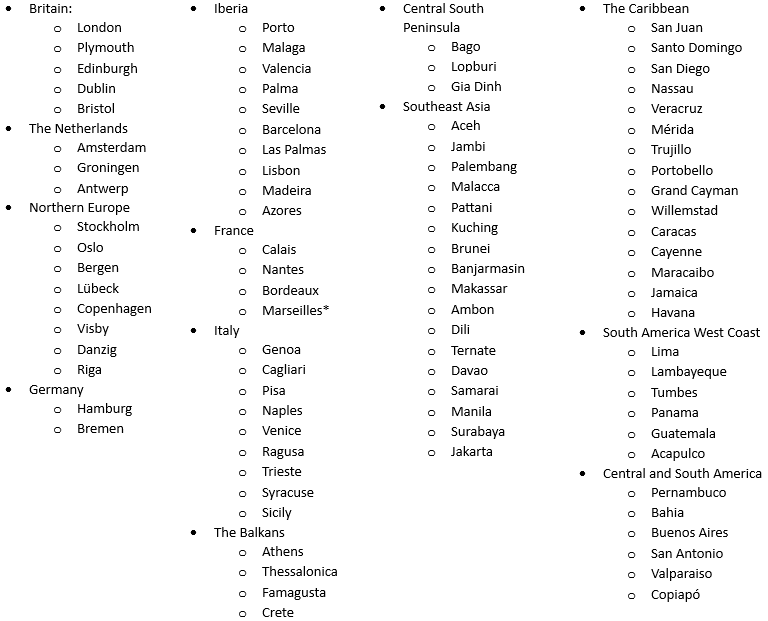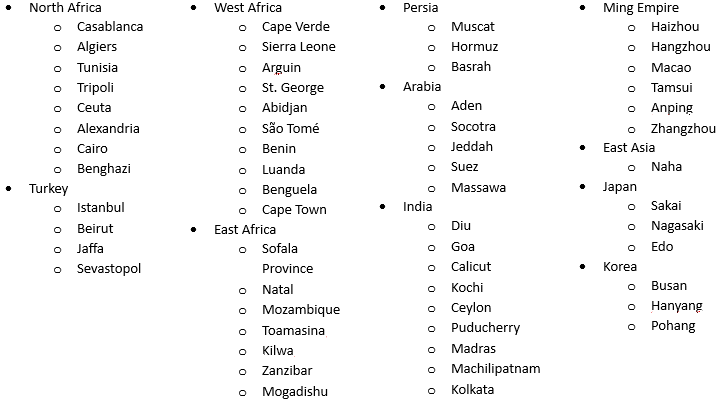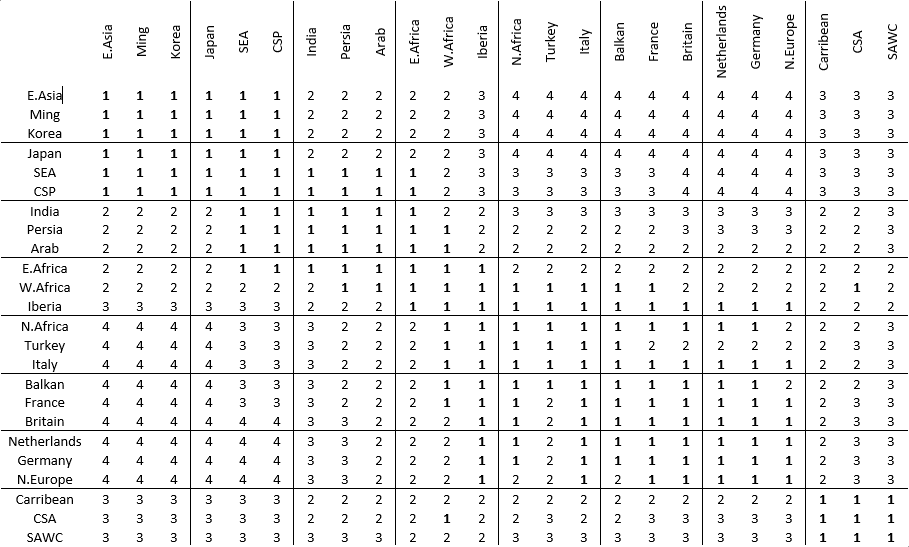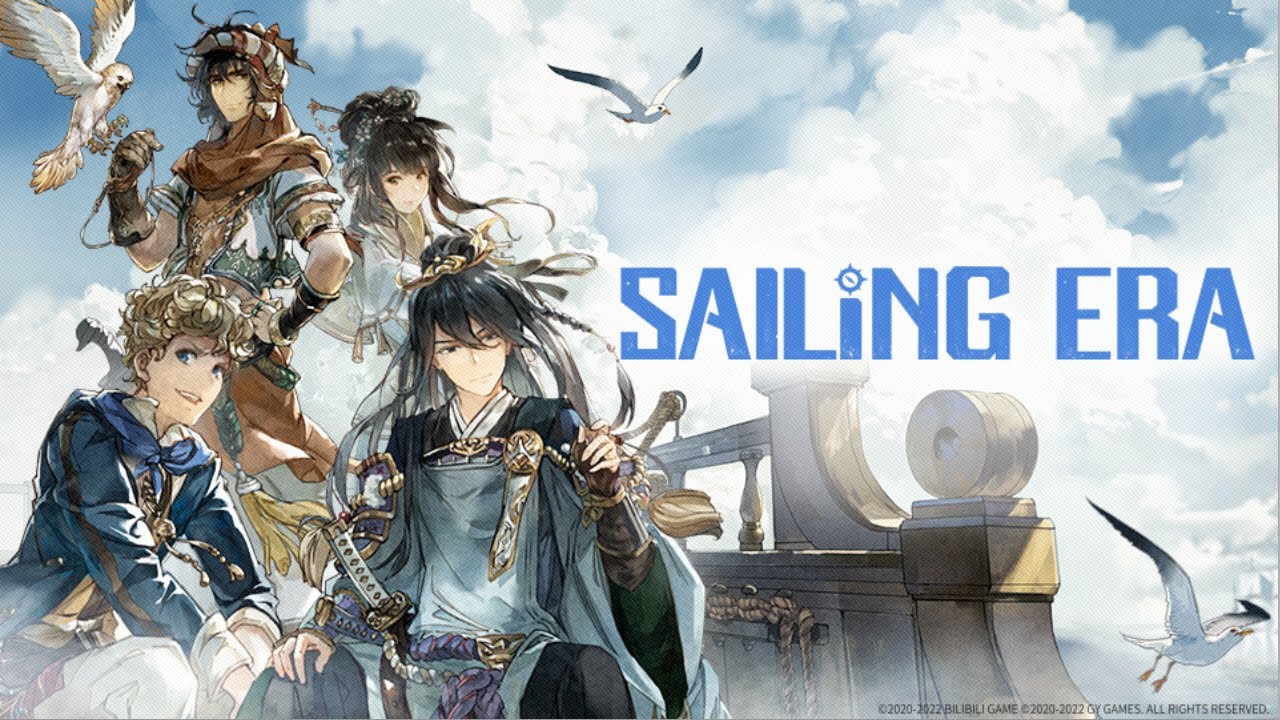ギルド取引, 文化経済圏, Sailing Era の各港の全商品の包括的な基準価格リスト.
概要
With the release of Sailing Era 1.2.4, the Trade Fleet function of the Guilds has seen an overhaul. 今, you can arrange a regular trade route from a city in which you have established a Guild with one or more Trade Routes to any city connected to it by a nautical route, with some restrictions.
These trades can run several times, or indefinitely. And the goods can be sold immediately or kept in storage at the Dock to be handled at your discretion.
But how do you set up routes you know will be profitable? For that, 私たち’ll have to get into the nature of the markets in Sailing Era.
Price of Goods
The selling price of a Good at a particular Port is determined by three factors:
- The Baseline Price of the Good for that Culture
- The Price Index for that Good at that Port that Month
- Whether that Good is for sale at that Port
The Baseline Price for non-specialty goods is the same at every Port. You can tell these goods at a glance from their perfectly square borders (like any of the Food items). 銀, 例えば, has a baseline price of 2000 everywhere in the world.
Specialty items may have a different Baseline Price at different Ports, depending on the Culture. You can tell specialty items from their stylized borders (like all the Hobby Goods). Tobacco has a Baseline Price of 1400 in the Caribbean, but that jumps to 5600 in Iberia or Italy.
Price Index can be viewed via Market Survey at the Store for the Port where you are docked, or from the Map you can view the Market Survey for any Port in which you have a Guild (this is one major advantage of having a Guild).
ついに, a Good being available for sale at a Port will result in a 10% lower price than it would normally have for that Cultural zone (anywhere Silver is sold, it sells for 1800 at Price Index 100%).
Please keep in mind, there is an additional 80% penalty to the sale price if you ever try to sell a Good to a Port it can normally be bought at. There is almost never a good reason to do this.
A spreadsheet of the baseline prices by Cultural Economic Zone can be found at: Sailing Era Baseline Price
Cultural Economic Zones
As of Sailing Era 1.2.4.6 がある 24 Cultural Economic Zones:


*Marseilles is a unique case: it is in the French Cultural zone but prices Soap, Chamomile, ブランデー, and Velvet as if it were in Italy (Linen is a non-specialty item).
The time it takes for a Trade Fleet to complete is determined by which zone it is travelling from and to:

Prior to developing the Charting Office, you will only be able to open a Trade Route to a port 1 Month away.
ストラテジー
Buy low, sell high. Ideal strategy is to find a Port in a nearby Cultural zone that has a significantly higher Baseline price for an item sold at the Port in which your Trade Route begins.
理想的には, this Port will also sell a Good for a much lower Baseline Price than your Guild Port has. This is not always possible, でも.
Take Naha, 例えば, a location that produces no Specialty Goods. Everything it sells has the same Baseline Price everywhere else, so you are relying only on the 10% discount from Naha and the whim of the Price Index.
でも, you can still make your profit on the return trip in this case. Trading with Bago for Jadeite is a near-guaranteed profit (300% 価値) so if we minimize our loss risk from Naha by trading our cheapest item (Fish Meat) we end up with our most lucrative trade over time.
Close study of the chart will result in a reliable passive income from just a few cities anywhere in the world.




